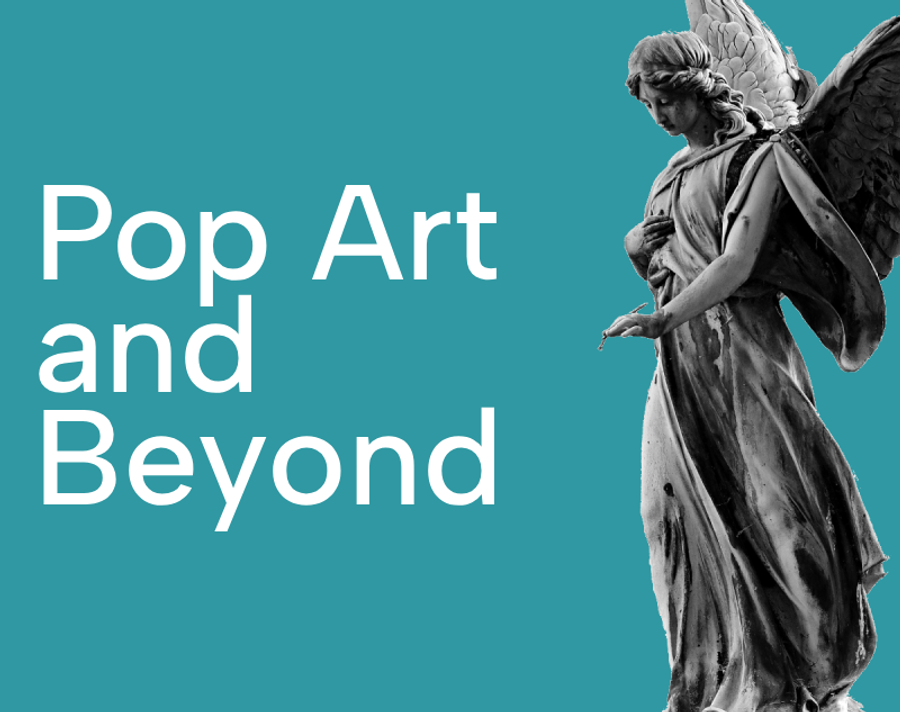
Angel Number Paintings as Pop Art and Beyond
Sep 12th 2025
Angel Number Paintings as Pop Art and Beyond
When you look at an angel number painting, with its bold repetition of numbers and the contrast of vibrant color layered over black and white, it immediately calls to mind the aesthetics of Pop Art. Yet, the beauty of these works lies in their ability to resonate with multiple artistic traditions at once, making them both spiritually symbolic and stylistically versatile.
Pop Art: Vibrancy and Repetition
Pop Art, made famous in the 1950s and 60s by artists like Andy Warhol and Roy Lichtenstein, used repetition, bold colors, and recognizable symbols to blur the line between fine art and popular culture. Angel number paintings share this same energy.
-
Repetition: Just as Warhol repeated soup cans or Marilyn Monroe’s portrait, these paintings repeat numbers, turning them into visual icons.
-
Vibrant Color: The splash of bright color against a layered monochrome background creates a high-impact focal point, echoing the Pop Art tradition of using color to make symbols “pop.”
-
Symbol as Subject: Pop artists elevated common, everyday images to the level of fine art. Similarly, angel numbers transform simple digits into sacred symbols, bridging spirituality and contemporary culture.
In this way, angel number paintings inherit the visual impact and accessibility of Pop Art while reimagining it through a lens of spirituality.
Abstract Expressionism: Gesture, Energy, and Intuition
Where Pop Art brings precision and repetition, Abstract Expressionism offers freedom, energy, and raw presence. Emerging in post–World War II America, Abstract Expressionism defined a generation of painters, from Jackson Pollock’s dripping canvases to Willem de Kooning’s gestural brushwork and Franz Kline’s bold black strokes.
The essence of Abstract Expressionism lies in its immediacy: paintings are not polished representations but direct expressions of movement, emotion, and intuition. This same quality pulses through angel number paintings.
-
The layered black and white numbers are gestural and spontaneous, their placement reflecting the artist’s movements and choice rather than rigid order.
-
Visible brushstrokes and imperfections leave behind the trace of process, capturing a moment of energy frozen in paint.
-
The method is guided by intuition, with number placement flowing organically; echoing the improvisational spirit that defined Abstract Expressionism.
For Abstract Expressionists, the canvas was an arena for action, a place where painting became an event. Angel number paintings channel that same energy, but align it with spiritual symbolism. Each brushstroke and block-printed layer becomes not only a mark of artistic presence but also an act of imbuing the work with intention.
This duality of raw, expressive energy intertwined with symbolic meaning gives angel number paintings a unique resonance. They are both visceral and contemplative, immediate and transcendent.
Minimalism and Conceptual Art: Symbol as Message
In some ways, angel number paintings also embody the spirit of Minimalism and Conceptual Art. At their core, the works are built around a single repeating symbol: the number itself.
-
Like Minimalist art, they reduce the form down to essentials: shape, number, and color.
-
Like Conceptual Art, the true meaning extends beyond the visual; the numbers hold personal and spiritual significance, making the idea as important as the image itself.
Folk and Spiritual Art Traditions
Angel number paintings also draw from traditions beyond the mainstream art world. The practice of layering symbols resonates with folk art and sacred art, where imagery often repeats to emphasize spiritual power. The use of numbers as the central motif places them in a lineage of esoteric and mystical symbolism, where numbers are seen not just as mathematical units but as carriers of divine meaning.
A Unique Blend of Styles
What makes angel number paintings so compelling is their hybrid identity. They can be viewed through the lens of Pop Art, Abstract Expressionism, Minimalism, or even spiritual folk traditions, but they resist being confined to a single category.
Instead, they merge these influences into a contemporary spiritual art form:
-
Pop Art’s vibrancy
-
Abstract Expressionism’s energy
-
Minimalism’s clarity
-
Sacred art’s symbolism
Final Reflection
Angel number paintings may look like Pop Art or Abstract Expressionism at first glance, but they offer a fusion of modern and timeless traditions that turn numbers into living, spiritual symbols.

